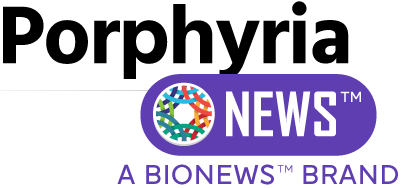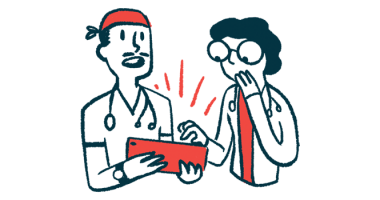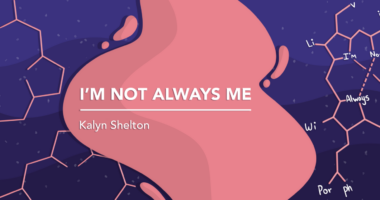How I Started Taking Givlaari for My Acute Porphyria

Well, I finally did it. I started Givlaari (givosiran).
Since my diagnosis in 2017, the development of this new treatment was all anyone in the acute hepatic porphyria (AHP) community could talk about. Finally, here was a medication that doesn’t just prevent acute attacks, but may improve chronic symptoms as well. Plus, the science was cool. It’s use of Nobel Prize-winning RNA interference to silence gene mutations was a big deal, and not just in porphyria circles.
Givlaari could eradicate AHP attacks, according to the medical research community. In fact, Phase 3 clinical trial participants reported a 74% reduction in attacks within an initial six-month period. To say expectations were high is an understatement.
Cue my anxiety!
Some context for my hesitation
Since the U.S. Food and Drug Administration approved it in late 2019, nearly all of my porphyria friends have pursued Givlaari. I’ve cheered them on from the sidelines, where I could wave my pompoms and support them from a safe distance. All the while, I quietly observed the medication’s effects and eagerly gobbled up new information as it was released.
In today’s lesson: There are currently two treatment options for AHP. Put simply, Panhematin (hemin for injection) is an intravenous medication approved for treating attacks, and Givlaari is a subcutaneous injection used for symptom prevention.
In 1984, Panhematin (known at the time as hematin) became the first medication approved under the U.S. Orphan Drug Act. For the last few years, I’ve received weekly maintenance doses through my port, plus more during attacks. Prophylactic treatments gave me a degree of stability and helped keep me out of the hospital. But they’ve led to liver scans monitoring excess iron, irritation around my port, and time suck for the better part of a day. Medical burnout is a big part of my life.
In comparison, Givlaari is a quick monthly shot in the butt. Associated risks are related to a limited clinical trial population, concerning side effects, and a lack of long-term usage data. It may not prevent attacks immediately. But after months of buildup, my need for hemin infusions should be less, as attacks decrease in severity. I know some people with AHP who’ve had their ports removed. That is the dream.
Unfortunately, that is also the danger — this way of thinking there’s a one-size-fits-all medical solution. I didn’t call up my care team the moment Givlaari was approved because I had too many questions, too many unknowns. And I couldn’t emotionally handle the weight of a potentially life-changing medication.
The pressure to start Givlaari came from all sides: my doctors, members of my porphyria community, and even those in my family. I am fortunate for the support, but knew I couldn’t start a new medication assuming it would dramatically alter my world. It’s not that I feared healing, but I’ve had high hopes for treatments before and was let down. Plus, I only just learned how to peacefully coexist with painful symptoms.
I stuck with my prophylactic hemin treatment as I considered next steps.
Preparing to get started
Starting Givlaari was an emotional experience, given both my mental process and the appeals to health insurance.
After an attack left me shaken and hospitalized for a week in April, I made my decision. From this point, it took a village.
With help from my doctors, the American Porphyria Foundation, and Alnylam Assist, I endured highly emotional insurance denials and a months-long battle for coverage. Earlier this summer, I was approved to start Givlaari. Looking back, my fight for access proved helpful in building confidence for my decision.
While waiting for my first dose, I mentally prepared for the onslaught of uncertainty that accompanies an unfamiliar drug. I challenged my fears through journaling and therapy. I made space for my body to grow accustomed to a new therapy, building flexibility into my schedule, communicating intentionally with loved ones, and creating a shared plan of action with my medical team. I called on kind and generous friends, who were living with similarly overactive cases of AHP. Learning about their personal experiences on Givlaari was invaluable and demystifying.
New medication can be exciting, but it comes with a host of challenges and unknowns. I couldn’t force myself to try Givlaari until I was ready. I had to learn all I could and tune out the expectations of others in order to define my own. This mindset enabled me to roll with health insurance denials and evolving symptoms that feel unwelcome because they are strange.
I’m one month into my Givlaari journey, and feeling gratitude for everyone who helped me and the entire porphyria community get here. While I have hope we all experience an improved quality of life with this new medication, I plan on taking things a day at a time.
***
Note: Porphyria News is strictly a news and information website about the disease. It does not provide medical advice, diagnosis, or treatment. This content is not intended to be a substitute for professional medical advice, diagnosis, or treatment. Always seek the advice of your physician or other qualified health provider with any questions you may have regarding a medical condition. Never disregard professional medical advice or delay in seeking it because of something you have read on this website. The opinions expressed in this column are not those of Porphyria News or its parent company, Bionews, and are intended to spark discussion about issues pertaining to porphyria.









Comments
Jane Seatin
Good thoughts and prayers are coming your way!❤️